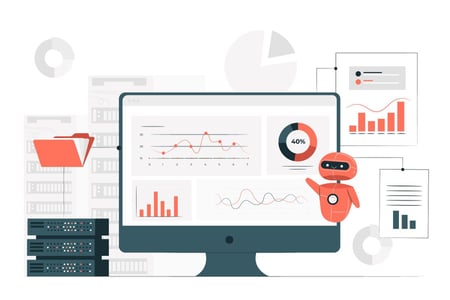If you are a regular reader of this blog, you know that most of the ideas and things shared come from real- world dialogues and experiences either from an Advantexe training program or interviews and research I am conducting as part of the development of new programs.
world dialogues and experiences either from an Advantexe training program or interviews and research I am conducting as part of the development of new programs.
I’ve been blessed this week to have delivered four different Business Leadership and Business Acumen programs to a variety of clients across several industries. Interestingly enough the topic of “People Analytics” came up on two occasions and although not a statistical trend, the passion, and veracity of the discussions has led me to write this blog and the sharing of four ways business leaders are utilizing people analytics for business success.
What is People Analytics?
Before we begin, I must first define what is people analytics. For full transparency, before today I never gave the concept of people analytics much thought but soon began to realize its importance.
People analytics is the collection and application of talent data to improve critical talent and business outcomes. People analytics leaders enable HR leaders to develop data-driven insights to inform talent decisions, improve workforce processes, and promote positive employee experience.
Four Things People Analytics can do to Drive Business Results
Improve Employee Retention
This was the top discussion point. Traditionally, the data around why employees left an organization can be from exit interviews and the water coolers. The analytics were subjective and typically came back to poor strategy, poor culture, and poor leadership.
In today’s complex world where there is both a talent shortage and new rules of engagement such as working remotely, retaining key talent is a top priority. One of the things that was shared by a senior HR leader in one of my sessions was the use of technology to build predictive models based on people analytics to determine which top talent was most likely to leave and why. Some of the unusual data parameters included:
- How quickly it took for a new employee to double their initial salary in bonuses and pay raises. If it was less than 5 years, they were highly likely to leave.
- Equity in work-life balance was another topic. What was most interesting is that the data shows the issue in not having a work-life balance in an organization but there is a fair work-life balance where the top performers feel the average performers take advantage of the system at the expense of the top performers.
Improved Training and Skill Development
When it comes to training and development, people analytics can also match the capability requirements of the organization with the learning needs of individual employees. Business Acumen Skills and Business Leadership skills are just two competency areas where this makes the most sense.
Predictive people analytics makes use of artificial intelligence to help Talent Development professionals identify skill gaps and then close those skill gaps by identifying the right people for the right training.
Optimized Talent Acquisition
Talent acquisition is another part of the HR world that has been disrupted significantly any times. We heard loud and clear from the discussion that talent acquisition is a big thing and finding and hiring the right people is more important today than ever before.
How do you attract the best talent? How do you establish what the ‘best’ even looks like to start with? How much should you pay for this talent? And finally, how do you defend and sell internally all of your hiring choices when you know 50% of them will fail?
We heard some very interesting stories about how people analytics can help by giving insights into what makes an ‘ideal’ employee. By integrating predictive analytics into the recruitment process, smart algorithms can be written using historical data to recommend best-fit candidates to hiring managers.
Provide Better Onboarding
We heard some fascinating stories right out of the latest science fiction movies about how companies are levering the power of people analytics to help speed up a new employee’s journey to productivity. Onboarding is a is a vital part of the new employee experience, as it can impact the employee’s initial feelings of belonging, commitment, and success. It helps new hires to adjust to the company’s environment so they can feel engaged and prepared for their jobs. When managed effectively, onboarding can result in a faster learning curve for the employee, with a direct impact on business results and productivity.
What we learned from the discussion is that organizations don’t need to wait until the new hire’s first day on the job. Pre-employment assessments can provide a fast start in understanding employee strengths and weaknesses, so that actions can be taken well in advance to support employee development. People analytics can help by offering a customized onboarding process, designed to meet the needs of each new hire.
For example, Advantexe recently deployed a new “How My Company Makes Money” business simulation for new hires in advance of them starting so they can understand the strategy of the business and the key metrics of success.
In summary, it feels like we are just begging to understand the power of people analytics in key HR areas such as talent discovery and talent development. It going to be a fascinating next few years as the AI gets smarter and the data becomes more available.




